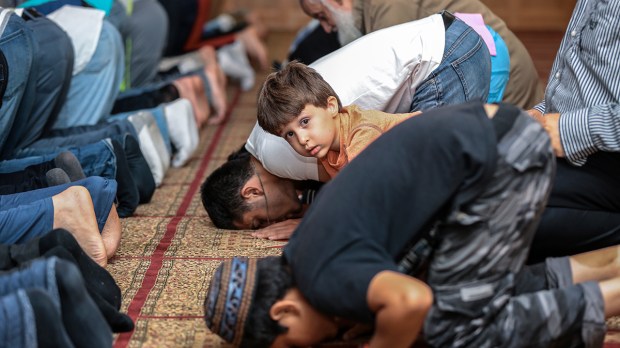Sweden could be 31% Muslim by the year 2050, according to a new study by the Pew Research Center.
The latest available figures estimate 25.8 million Muslims in the 28 countries in the European Union, including Great Britain, plus Norway and Switzerland. That’s 4.9% of the overall population, which is up from 19.5 million, or 3.8% of the population, in 2010.
Even if all migration into Europe were to immediately and permanently stop, Pew says in its report, released Wednesday, the Muslim population of Europe still would be expected to rise to 7.4% of the overall population by the year 2050. “This is because Muslims are younger (by 13 years, on average) and have higher fertility (one child more per woman, on average) than other Europeans, mirroring a global pattern,” the research organization says.
But a “zero immigration” scenario is unlikely, so Pew proposed a “medium migration” scenario, in which that all refugee flows from predominantly Muslim countries stop but that recent levels of “regular” migration to Europe continue (migration of those who come for reasons other than seeking asylum, such as better job and education opportunities). “Under these conditions, Muslims could reach 11.2% of Europe’s population in 2050,” Pew says.
But a third, “high” migration scenario projects the record flow of refugees into Europe between 2014 and 2016 “to continue indefinitely into the future with the same religious composition (i.e., mostly made up of Muslims) in addition to the typical annual flow of regular migrants.” If this were to transpire, Muslims could make up 14% of Europe’s population by 2050, Pew estimates.
Meanwhile, the study forecasts, Europe’s non-Muslims are projected to decline in total number in each of the three scenarios.
The distribution of the rise in Muslim population is expected to be uneven, largely based on the various policies European countries have had in regards to the recent influx of refugees and asylum seekers:
Countries that have received relatively large numbers of Muslim refugees in recent years are projected to experience the biggest changes in the high migration scenario—the only one that projects these heavy refugee flows to continue into the future. For instance, Germany’s population (6% Muslim in 2016) would be projected to be about 20% Muslim by 2050 in the high scenario—a reflection of the fact that Germany has accepted many Muslim refugees in recent years—compared with 11% in the medium scenario and 9% in the zero migration scenario. Sweden, which also has accepted a relatively high number of refugees, would experience even greater effects if the migration levels from 2014 to mid-2016 were to continue indefinitely: Sweden’s population (8% Muslim in 2016) could grow to 31% Muslim in the high scenario by 2050, compared with 21% in the medium scenario and 11% with no further Muslim migration.
By comparison, the Muslim population in the United States is expected to rise to only 2% by 2050, from its proportion of 1% now, according to Pew estimates released earlier this year.

